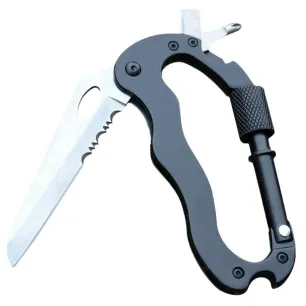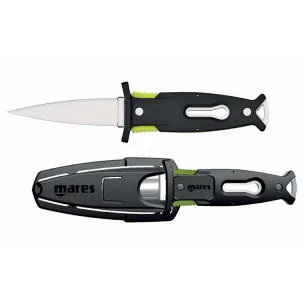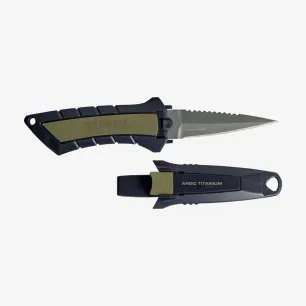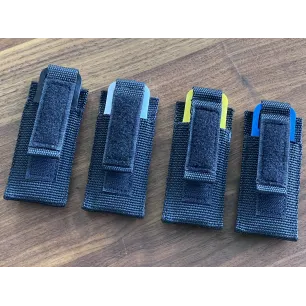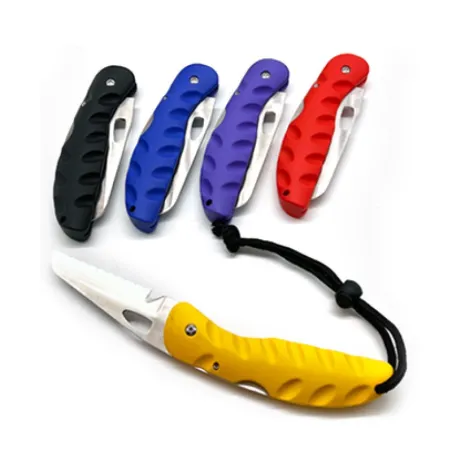
Knives for SCUBA Diving
For SCUBA diving, the rule is: Starting at the Advanced Open Water Diver level, a knife is part of the basic equipment and should be carried on every dive. This tradition may have its roots in the machismo of early SCUBA divers but has remained an established part of diving gear to this day.
Knives for Freediving
In freediving, there are no fixed rules or recommendations regarding carrying a knife. Each freediver must evaluate for themselves whether the benefits of having a knife outweigh the potential risks.
How high is the risk of getting caught in a ghost net?
In local waters, fishing nets are usually placed just above the bottom and made of fine, often green nylon, which is nearly invisible. Only lead weights or floats may indicate their position. In the sea, thicker, more visible nets are commonly used, but there are also more uncontrolled drifting nets, known as ghost nets.
Where to attach the knife as a freediver or spearfisher?
The knife can be attached to the leg, arm, or weight belt. Another practical option is securing the knife to the buoy. It is important that the knife is tied to its sheath with a piece of Dyneema or a thin cord. Even the best quick-release systems can fail, and without this precaution, you risk losing your knife.
Rust and Maintenance of Diving Knives
Although many manufacturers claim their steel knives are stainless, in the long run, every steel will rust in saltwater. Steel knives should be disassembled after each contact with water, rinsed with fresh water, and lightly oiled if possible. In an emergency, olive oil can also work. However, in practice, this can be challenging, such as on a week-long boat trip. You will often find that your knife has started rusting by the end of your vacation, especially under the plastic handle. The only truly rustproof knives are those made of ceramic or titanium.
5 products





